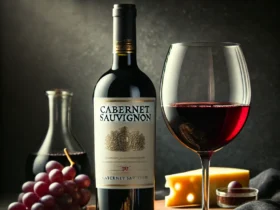Introduction
Hosting a wine tasting can be a delightful and educational experience, whether you’re a seasoned wine enthusiast or a beginner. It’s an opportunity to explore different wines, learn about their characteristics, and enjoy the company of fellow wine lovers. This guide will help you organize a successful wine tasting event, with tips on selecting wines, serving portions, and creating an engaging atmosphere.
Planning the Wine Tasting
- Set a Theme
- Choosing a theme can help narrow down your wine selection and make the tasting more cohesive. Themes can be based on:
- Region: Focus on wines from a specific region, such as California, Italy, or France.
- Varietal: Compare different wines made from the same grape variety, like Cabernet Sauvignon or Chardonnay.
- Vintage: Explore wines from different years to understand how aging affects flavor.
- Price Range: Compare wines at different price points to see how they differ.
- Choosing a theme can help narrow down your wine selection and make the tasting more cohesive. Themes can be based on:
- Select the Wines
- Once you’ve decided on a theme, choose a selection of wines that fit. For a typical tasting, 4-6 different wines are ideal. Ensure a variety of styles and producers to offer a broad experience.
- In California wine tastings, a common serving size is 1.5 ounces per wine. This allows participants to taste multiple wines without overindulging.
- Prepare the Tasting Space
- Set up a clean, well-lit area with enough space for guests to move around and converse. A table for the wines, glasses, and tasting notes is essential.
- Provide sufficient wine glasses—one per wine per person, or a rinsing station if reusing glasses.
- Have water and plain crackers or bread available to cleanse the palate between tastings.
- Provide Tasting Sheets
- Tasting sheets can help participants record their observations and compare notes. Include sections for wine name, producer, region, vintage, appearance, aroma, flavor, and personal rating.
Conducting the Wine Tasting
- Introduction
- Begin with a brief introduction to the theme and the wines selected. Share interesting facts about the region, grape varieties, and producers.
- Tasting Order
- Typically, wines are tasted from light to heavy or from dry to sweet. This helps prevent more intense wines from overpowering lighter ones.
- Tasting Process
- Encourage participants to use a consistent method for evaluating each wine:
- Appearance: Observe the color and clarity.
- Aroma: Swirl the wine in the glass and take a moment to inhale the aromas. Note the intensity and types of scents detected.
- Taste: Take a small sip and let it sit in the mouth. Evaluate the flavors, acidity, tannins, body, and finish.
- Conclusion: Discuss the overall impression of the wine and how it compares to others tasted.
- Encourage participants to use a consistent method for evaluating each wine:
- Engage Participants
- Encourage discussion and sharing of notes. Wine tasting is a subjective experience, and different palates may perceive flavors differently.
Additional Tips
- Decanting: If serving older wines or those with heavy sediment, consider decanting to separate the wine from any sediment and to allow it to breathe.
- Temperature: Serve wines at the appropriate temperature: reds slightly below room temperature (60-65°F) and whites well chilled (45-55°F).
- Etiquette: Remind participants to pace themselves and to use spittoons if provided, especially when tasting multiple wines.
Conclusion
Running a wine tasting can be an enriching experience that enhances your appreciation of wine. By carefully selecting wines, setting up an inviting space, and guiding participants through the tasting process, you can create a memorable and educational event. Whether you’re exploring California wines or any other region, the key is to enjoy the journey of discovering new flavors and sharing the experience with others.
Wine Tasting FAQ
1. How many wines should be included in a wine tasting?
A typical wine tasting includes 4-6 different wines. This allows for a good range of comparisons without overwhelming the participants. The number can vary depending on the theme and the experience level of the tasters.
2. What is the standard serving size for a wine tasting?
The standard serving size for a wine tasting is about 1.5 ounces per wine. This small pour size allows participants to sample multiple wines without consuming too much alcohol.
3. How should wines be ordered in a tasting?
Wines are usually tasted from light to heavy, or from dry to sweet. This progression helps prevent heavier wines from overwhelming the palate and allows tasters to appreciate the subtleties of each wine.
4. What are the key steps in the wine tasting process?
The wine tasting process generally involves:
- Appearance: Observing the wine’s color and clarity.
- Aroma: Smelling the wine to detect aromas and scents.
- Taste: Sipping the wine to assess its flavors, acidity, tannins, body, and finish.
- Conclusion: Reflecting on the overall impression of the wine and discussing it with others.
5. What are some common wine tasting terms?
Common wine tasting terms include:
- Body: Refers to the weight or fullness of the wine in the mouth (light, medium, full).
- Tannins: Compounds in wine that contribute to its structure and can cause a drying sensation.
- Acidity: The freshness or crispness of the wine, contributing to its balance and food-pairing ability.
- Finish: The aftertaste or lingering flavor after swallowing the wine.
- Nose: The aroma or bouquet of the wine.
6. Do I need to decant wine for a tasting?
Decanting is recommended for older wines or those with heavy sediment, as it helps separate the sediment and allows the wine to aerate. Decanting can also enhance the flavors and aromas of younger wines with high tannin levels.
7. What should be provided during a wine tasting?
Essential items for a wine tasting include:
- Wine glasses (one per wine per person, or a rinsing station if reusing glasses)
- Tasting sheets or note cards
- Water and palate cleansers (such as plain crackers or bread)
- Spittoons, if desired, for those who prefer not to consume the wine
8. What foods pair well with wine tasting?
Light snacks that do not overpower the wine are ideal, such as cheeses, bread, fruit, and nuts. Choose items that complement the wines being tasted and help cleanse the palate.
9. How do I choose a theme for a wine tasting?
Themes can be based on region (e.g., California wines), grape variety (e.g., Pinot Noir), wine style (e.g., sparkling wines), or even price range. A clear theme helps focus the tasting and enhances the educational aspect of the event.
10. Can wine tasting be done virtually?
Yes, virtual wine tastings have become popular, especially when in-person gatherings are not possible. Participants can receive a list of wines to purchase or have tasting kits delivered. The host can then guide the tasting over a video call, providing a shared experience from the comfort of participants’ homes.







Leave a Reply